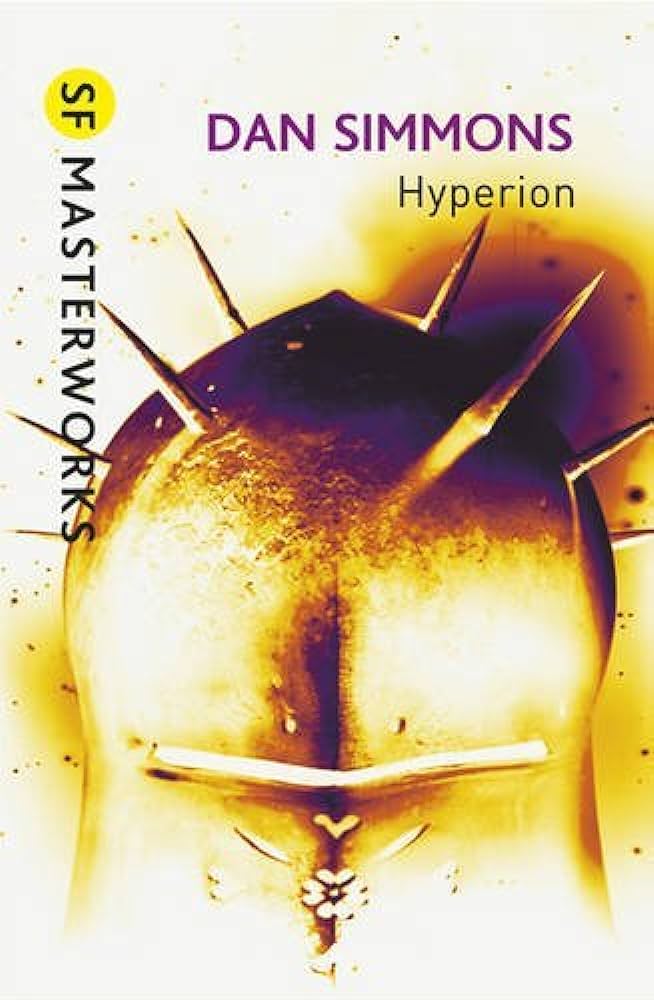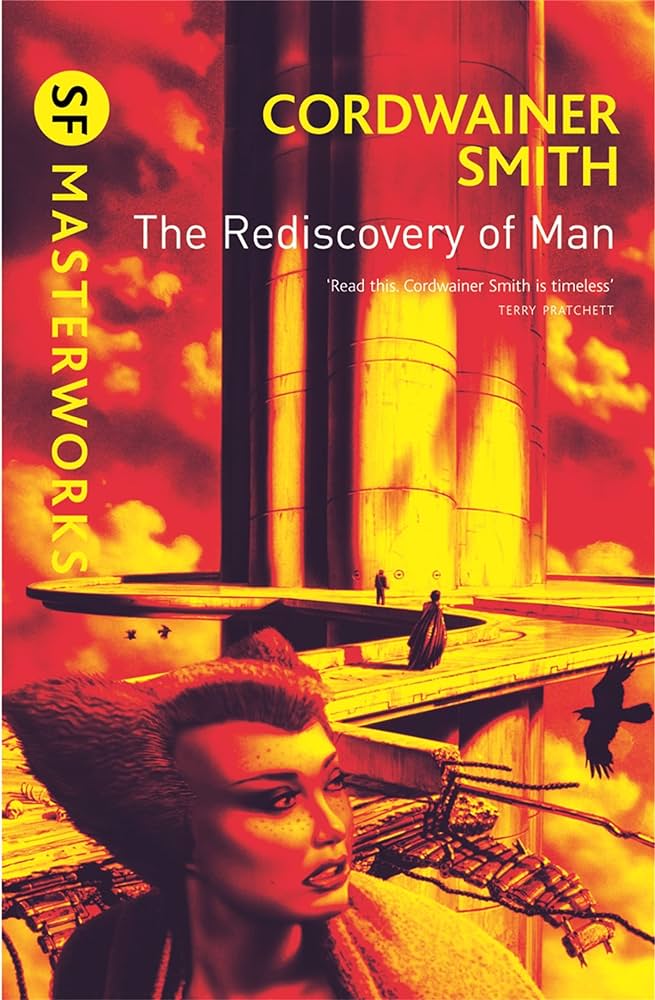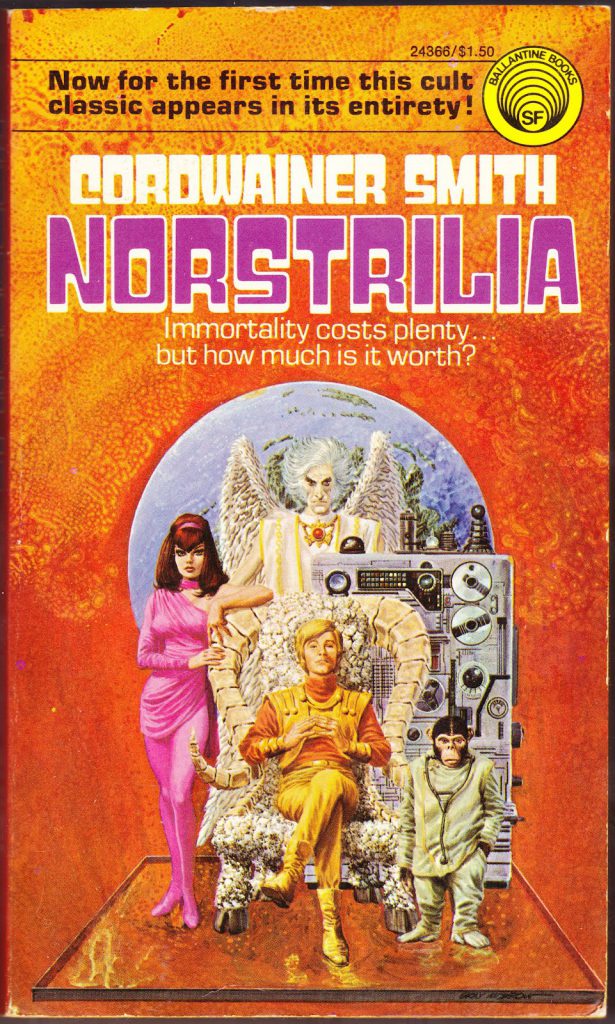It’s very possible that you’ve recently been out to see a movie that’s kind of about a guy called Paul, though it’s really about how cool worms are. Dune 2 has hit, and with it a whole tranche of people are settling down to watch – and perhaps read – some epic scifi. If you’re in that situation and you’re hankering for more grand narratives of politics, betrayal, monsters, literary references and religion, Goonhammer Reads Scifi is here for you. And there for you. We can be in many places at once, you know.
I know “epic scifi” and “space opera” are often synonymous, but I don’t think they should be. “Space opera” can be about grand narratives and the struggle to overcome great trials, but I don’t think it tends to do things like “talk at length about the ecology of worms” so well. Nova by Samuel Delaney is a space opera (and it’s great!), but epic scifi does something else. We’ll return to space opera another time, but for now, let’s get epic.

Really we should start this off by saying: Go read Dune. The movies are great, easily the best treatment of the original book by Frank Herbert (though I’d still ride and die for Kyle MacLachlan’s Paul), but the book is better. It’s got more ecology, more weirdness, more Alia and a much more inhabited, lived-in world. Reading Dune can end quite happily with that first book, a self-contained adventure story that avoids getting trapped in the narrative. But you’d be denying yourself the books that follow: Dune Messiah (good), Children of Dune (messy but good), God Emperor of Dune (bonkers and good), Heretics of Dune (not good, just horny) and Chapterhouse: Dune (also not good, also horny).
If you’re all Dune’d out though, never fear. Classic sci-fi holds many an epic narrative. I’ve thought of a few that tease out some of the threads Herbert wove into his best novel and – Bless the Maker – have come up with some good next reads.
Hyperion, Dan Simmons
Six pilgrims share six tales which are by turns religious, moving, bombastic and fantastical, piecing together a slowly-growing story of the Hegemony of Man, the Para-causal Time Tombs and the mystery that is the Shrike. As the pilgrims come together, we’re guided through something momentous and profound while the pilgrims wend their way to a destination that may hold answers, or may present nothing but destruction.

It was inevitable that we’d get to Hyperion eventually. If Dune is about religious allegory and ripping historical and fictional works off relatively wholesale and transplanting them into science fiction settings, then this is the perfect time to talk about another example of the form. Simmons’ Hyperion is Chaucer/Boccaccio in space, a collective telling of tales by pilgrims on their way to the Time Tombs, there to face a force of nature as influential on later stories as the sandworms were in 1965: The Shrike.
It’s in the article because it was highly influential and massively popular, but also for its pacing, narrative interplay…and the fact that its sequels might well rival Dune for the level of diminishing returns the reader faces. The Fall of Hyperion, Endymion, and Rise of Endymion head slowly at first into full-on later-Dune-novel weirdness, structural issues, and barely-elided racism. Simmons himself has gone fully off the chain into Islamophobia, racism and ultra-conservatism, and I’d not in good conscience recommend a single other one of his books. Hyperion has some of these problems as well, though better hidden than in his other work. I believe it is still worth a read, despite the author and the rest of his output. It was – and remains – massively influential in the “new space opera” genre, taking the emerging post-cyberpunk space opera movement and giving it a real boost. I don’t know if we’d get the later Culture novels (at least in the forms they took), The Quiet War, The Night’s Dawn or even Ancillary Justice without it.
Floating Worlds, Cecilia Holland
The Solar System is divided into three great powers. On Earth, Anarchist politics and philosophy has rebuilt humanity from the ashes of nuclear war. On Mars, increasingly militant traders and soldiers look outwards to the stars. Far in the darkness beyond the belt, the Styth raid, plot and capture, positioning themselves as the true heirs to humanity’s spacefaring past, and perhaps future. Paula Mendoza, as a representative of Earth’s Committee for the Revolution, must chart a perilous path between competing powers, hoping to bring the stability our species sorely needs.

If Dune is great man history – what an If there, it’s the sci-fi definition of great man history – then Floating Worlds is normal woman history. History, world changing events, politics, people, technology happen to, with, by and from Paula. She is not passive, not carried along on a tide driven by men, but a realistic inhabitant of a solar system of processes, of political and economic inertia; the kind of system that Herbert has Paul and Leto II disrupt through sheer force of will and a heavy helping of melange. As a result, it’s a different kind of epic sci-fi, a space opera that is simultaneously more real and more terrifying. Paula strives, achieves, creates, loves, grieves and has real, actual, emotion while acting to balance and disrupt the scales of her world(s) as much as any human can. There’s a simple example of this – in stark contrast to Herbert – Paula has sex. Paul just fucks.
Holland did great things with Paula as a protagonist; she’s intensely relatable, often likeable and, as it should, your degree of empathy and investment waxes and wanes with her actions. She is an agent within a structure, and that’s something that epic sci-fi and space opera often forgets in it’s rush to set up a system and then see its (usually) male protagonist transcend it. Seeing epic sci-fi played out, with all its politics and economy, sex and gender, war and peace, by characters firmly within the system rather than deus ex machinas jacking each other off about golden paths is legitimately exciting. Holland’s world is also intricately created, with the very clear expertise of a writer who has mostly written in historical fiction. Anarchist Earth, fash Mars and honour-bound Styth all act according to the internal logic of their governments and worldviews. It’s a well-oiled machine that ticks away when grit isn’t sticking in the teeth – and Paula provides the grit.

Before you run out and buy it, note that the novel brings with it a lot of content warnings. Paula lives much of it as a woman in an incredibly misogynist society and experiences sexual assault. The Martians (among others) are incredibly racist towards the Styth, using deeply offensive language, so there are a lot of racist terms in the book. Holland neither revels or celebrates this stuff – there’s no fridging or sly championing of racist views (we’ll leave that to some of Dan Simmon’s work) – but these themes are present throughout the book. It can be an uncomfortable read at times, but you know that the author, at least, uses neither racism nor misogyny gratuitously.
Rediscovery of Man, Cordwainer Smith
There’s a couple of versions of Rediscovery of Man – I recommend the Gollancz version – and most of them chart the history of the Instrumentality of Mankind, a universe, empire and government that emerges from post-nuclear Earth into a wide and open Galaxy. The Instrumentality evolves over time, but many of the stories deal with the hard rule of the Instrumentality over the “underpeople”, animal-derived almost-humans created to free humanity into a life of leisure. The timeline of the Instrumentality is drawn over 25 short stories and two novels, all by the hand of one of sci-fi’s top reclusive oddities – Cordwainer Smith.

Smith wrote several books and dozens and dozens of short stories, all of them at least slightly strange, poetic, caring, psychological, weird – or all of the above. His worlds and humans are familiar, but only just; always something a little odder than most of his contemporaries were putting out, often tinged with religion and music, and liberally borrowing concepts, names and myths from European and Asian history. He’s got a definite style, best seen in the first and possibly best of the Instrumentality stories “Scanners Live in Vain,” or possibly in “The Lady Who Sailed the Soul.” It’s all good stuff; a veneer of Golden Age sci-fi stretched over deeper, sadder and more emotional foundations. You can get a good grasp on what we’re dealing with here by knowing that Cordwainer Smith was the pen name of Paul Linebarger, psychological warfare expert, Professor of Asiatic Studies, special advisor on almost-certainly legally and politically disowned US foreign policy in China, Korea, Vietnam, and occasional CIA advisor. An interesting fellow; I’d expect some mid-2050s declassification to throw a lot more light on him.
Dune was almost certainly influenced at least in part by Smith’s Instrumentality. A core thread of the stories – built into the novel Norstrilia – concerns “stroon”, an anti-aging/immortality drug sourced entirely from monstrous creatures (sheep) found only on one planet (Norstrilla), controlled by a group long exiled from Old Earth (Australians) who have journeyed through hellish planets to their slightly-deserty new home. The work Norstrilia comes after Dune, but the idea (and the drug) precede it, cropping up throughout the early Instrumentality novels.

The similarities aren’t just in plot, though. One of the enchanting things for me about the Dune novels when I first read them as a teenager – and what kept me going through the rough patches (and into the extremely rough patches) – was that the series eventually spreads over thousands and thousands of years. Seeing the long-term impacts of decisions made in prior books, the Golden Paths of various Atreides, play out in the subsequent books was fascinating to me as a teen. We’re reading a kind of future-history, or future archaeology, whereby we have the privileged knowledge of seeing the chain of causation that the characters can’t over the longue durée. It’s hard to do well, as Kevin Anderson and Brian Herbert proved, but if we want to see an absolute master of the form, pick up Rediscovery of Man.
Black Library Pick – Vaults of Terra, Chris Wraight
Interrogator Spinoza loves the Throne of Terra. She carries faith, purity, power armour and a big stick before her in her dedication to the Imperium. But no optimism, faith or hope, can survive the darkness of humanity’s birth-world. Secrets and lies from eons behind threaten to first shake and then topple the Emperor, and with Him, the Imperium.

I’ve recommended this one before – way, way back at the start of this series. I’ll recommend it again because while you could plausibly describe the entire 40k output of the Black Library as one tale of epic sci-fi, very little of it is as political, as interesting, as reference- and meaning-loaded, as Dune, or as concerned with worlds and their workings as epic sci-fi. The Vaults of Terra is. It is fascinating, pacy, well-written and well-structured. Above all, it’s gripping, and it cleans out some of the dirtiest corners of the Imperium not for Reddit-style lore dumps, but to draw us further and further in. The more of the machine you see, the more is left a mystery.
I think it’s not just possible, but likely, that Vaults of Terra is the best series of the last ten years of the Black Library. It is interesting, holds up exceptionally well to a reread, shakes the foundations of the 40k world just enough for you to know that Wraight not only understands it well, but understands the reasons for it too. By the end you know that he has a plan for 40k, perhaps one only in his head at the moment, but left to his own devices what wonders he could show us in our favourite grimdark playland.
Next time: The terrifying world of the mundane.
Questions, comments, suggestions? contact@goonhammer.com, or leave a comment below


